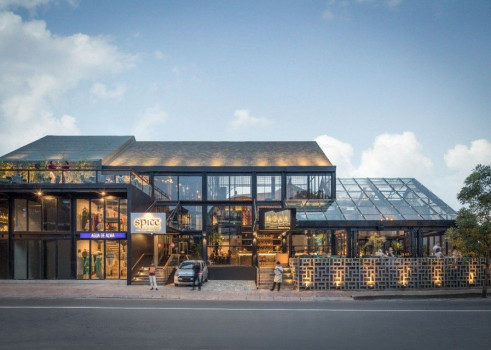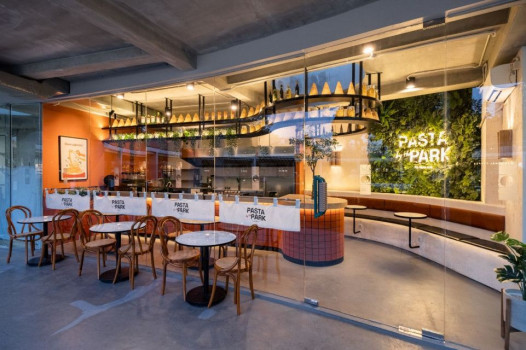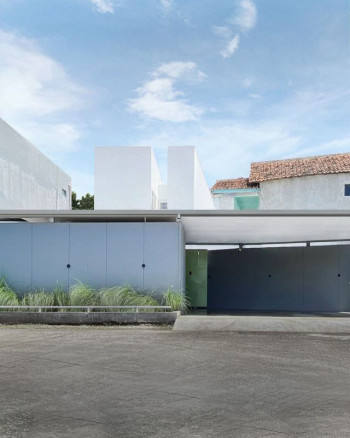SRG House



A 1970s heritage semi is reinvented with a sweeping restoration that celebrates its original character, and streamlines it for the future as a multi-generational home.

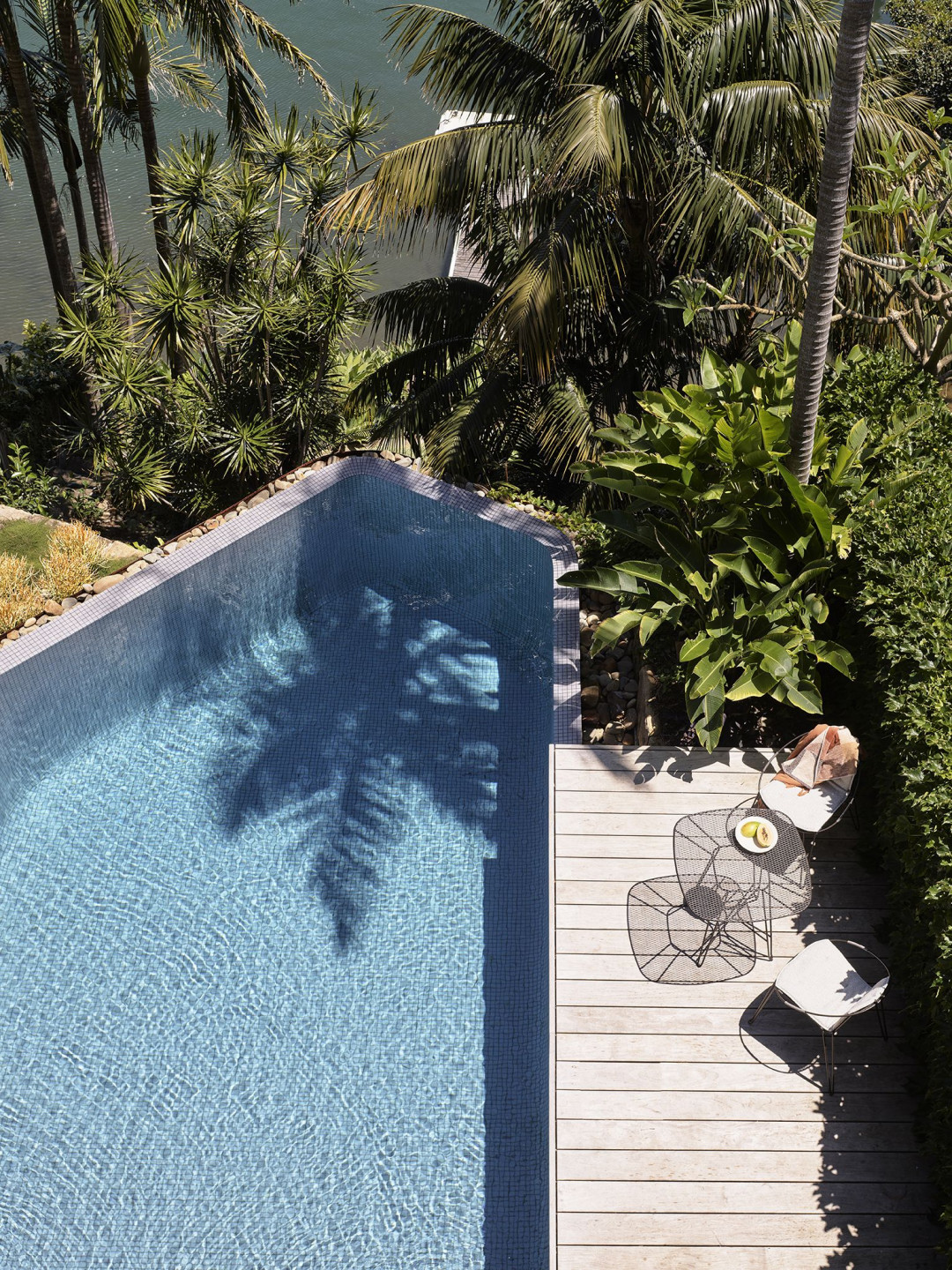
Nestled privately onto a steep Sydney harbour-side site, the three-storey semi was built in 1972 as a Sydney home for the prominent Melbourne architect, Sir Roy Grounds. The original interiors had been lost to 1980s renovations, but the structure was sound, and its stepped geometry legible.
Within the restored concrete structure, kinks in the floorplan were rationalised to create extra living space and new bedrooms within the original footprint.
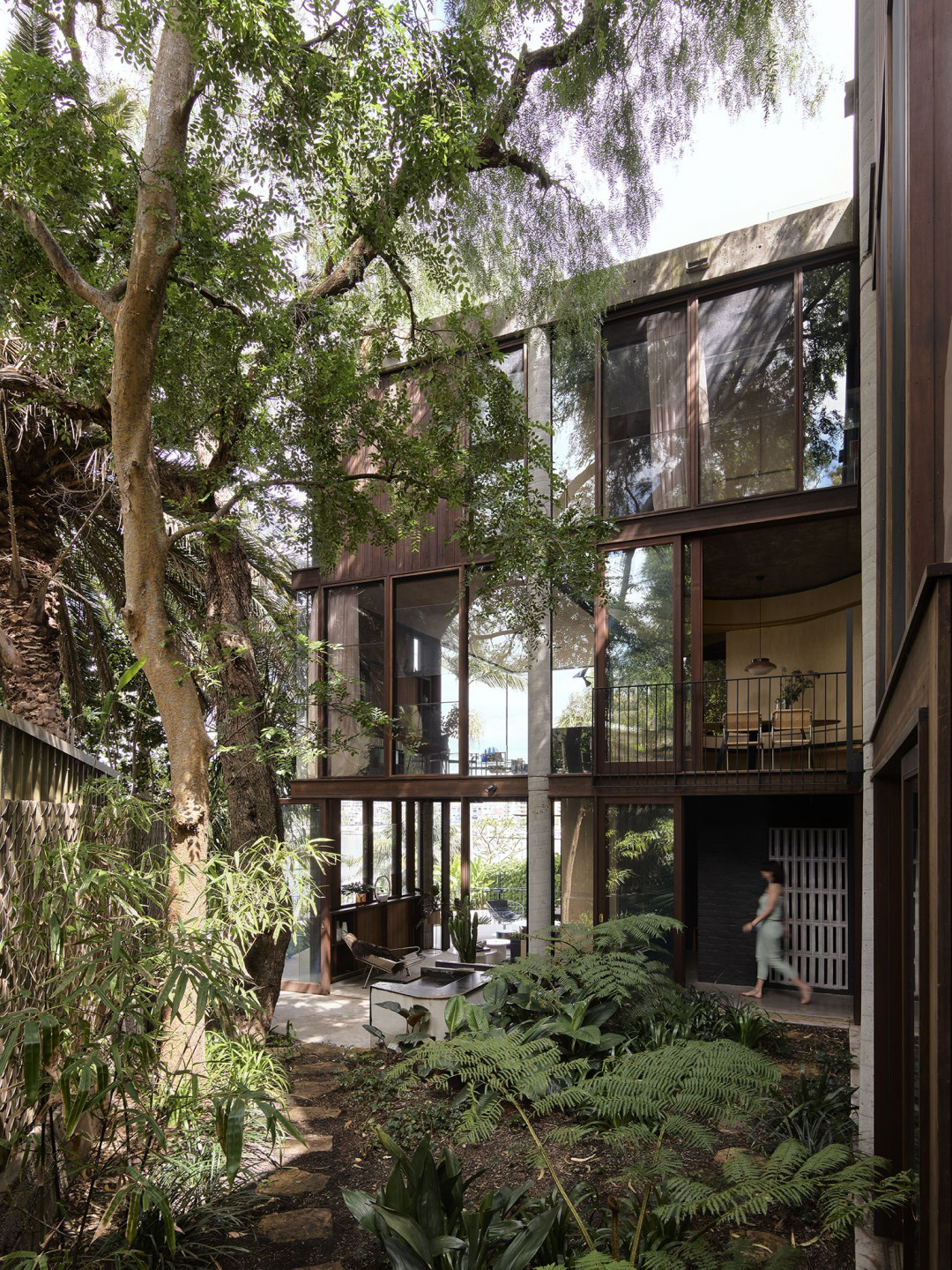

Sliding or stacking glass doors turn the middle living level into a balcony.
.jpg)
Utilising the site topography, an apartment is added above the garage that bolsters privacy and creates secondary accommodation.
The restored concrete structure is now insulated and re-engineered, dramatically improving interior comfort and environmental performance.
A fixed window grid is replaced with sliding and stacking glass doors, that open the middle living level up to the garden, views and breezes. A large air-conditioning plant was removed from lower-ground and the space converted into two bedrooms, opening to the central courtyard.
Peeling away the 80s linings, the 70s concrete structure was revealed and restored.
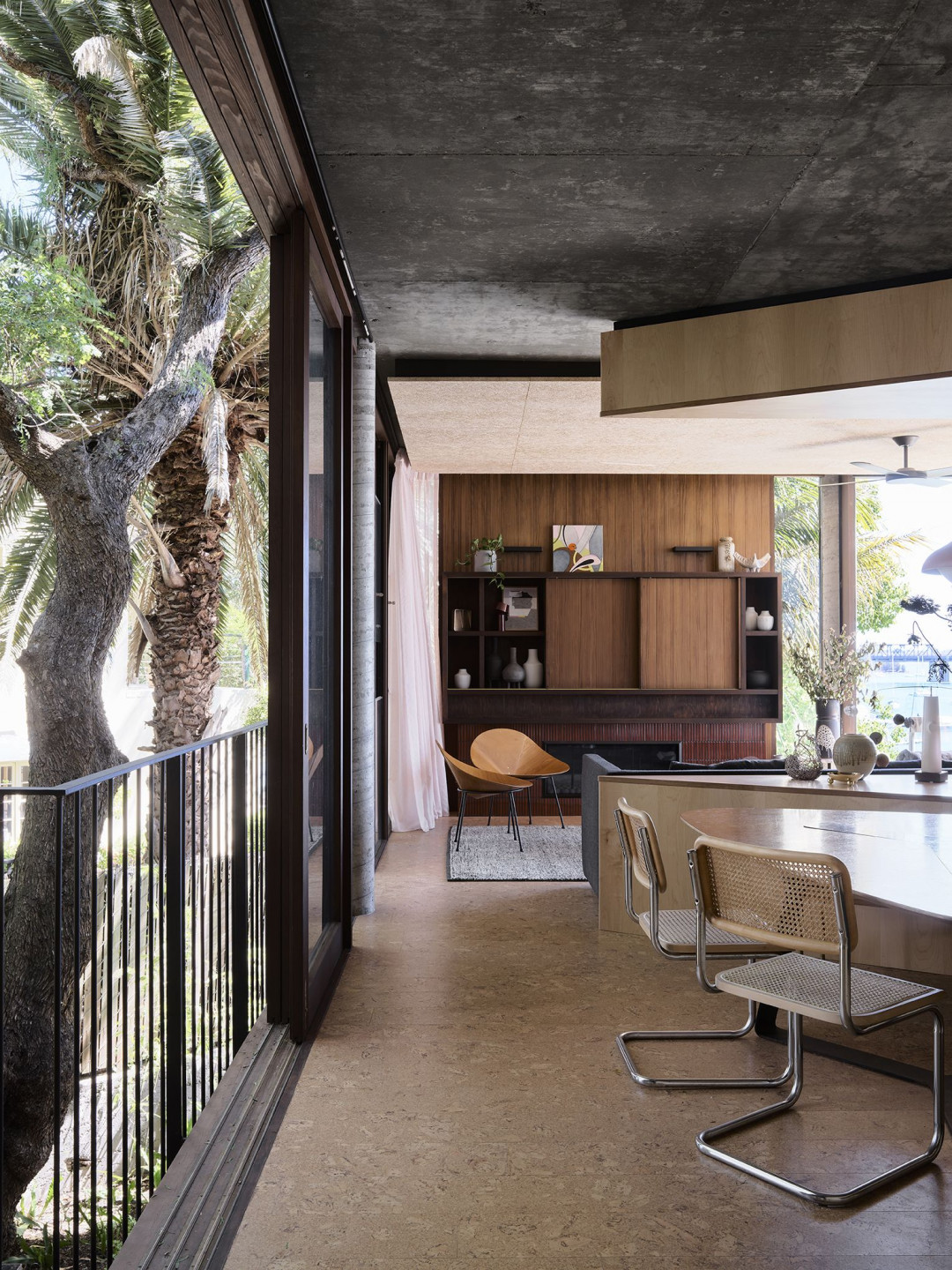
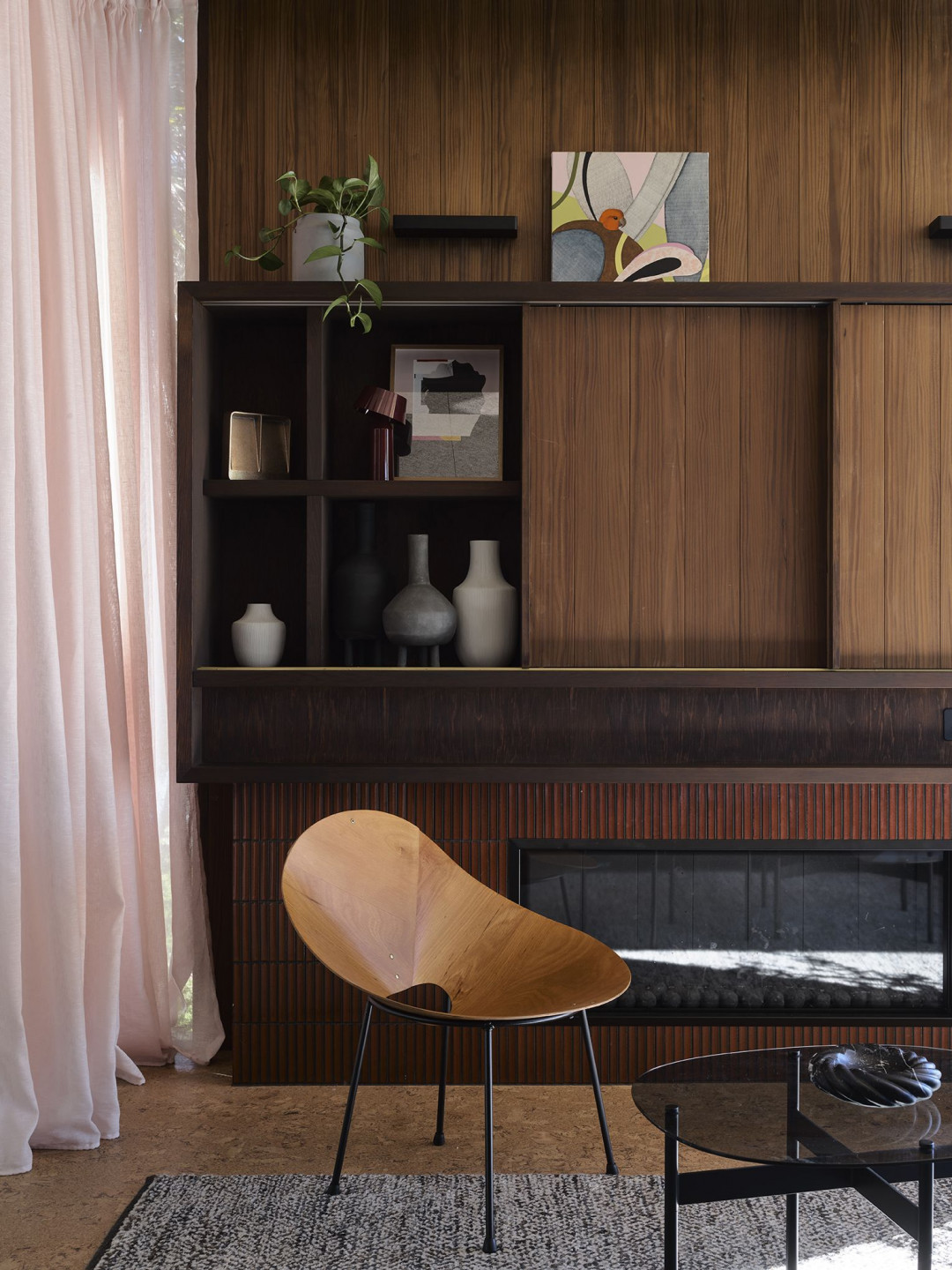
Interior geometries are softened and streamlined with built-in furnishing elements and textural materials echoing the original 70s palette: cork, wool, timber and brass. Linking the past to the present, are the deep red tiles, a colour match for original tiles unearthed in the reconstruction.
A lot of unseen re-engineering has dramatically raised the environmental performance.

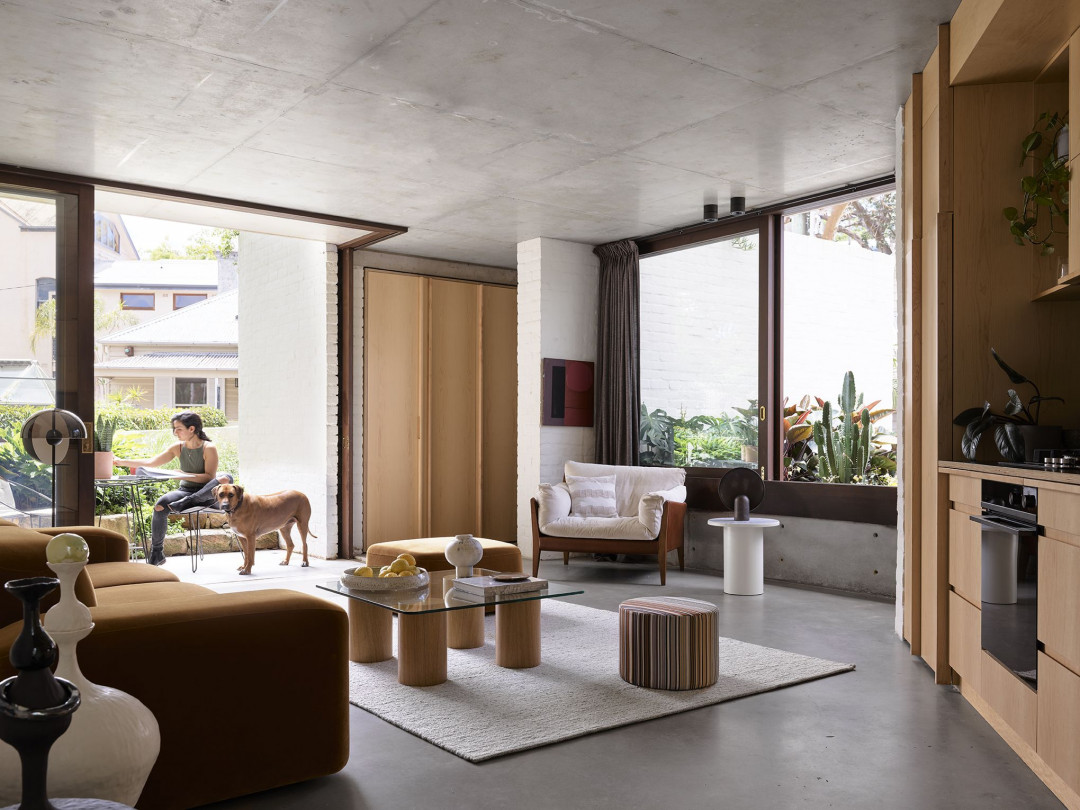
Key interventions
• Restoring the concrete structure.
• Strengthening outdoor connections.
• Improving environmental performance.
• Creating extra bedrooms and living space within the original footprint.
• Adding in-law accommodation.
• Softening interior geometries with curved, in-built furnishing elements.
• Insulation, solar panels, rainwater harvesting.
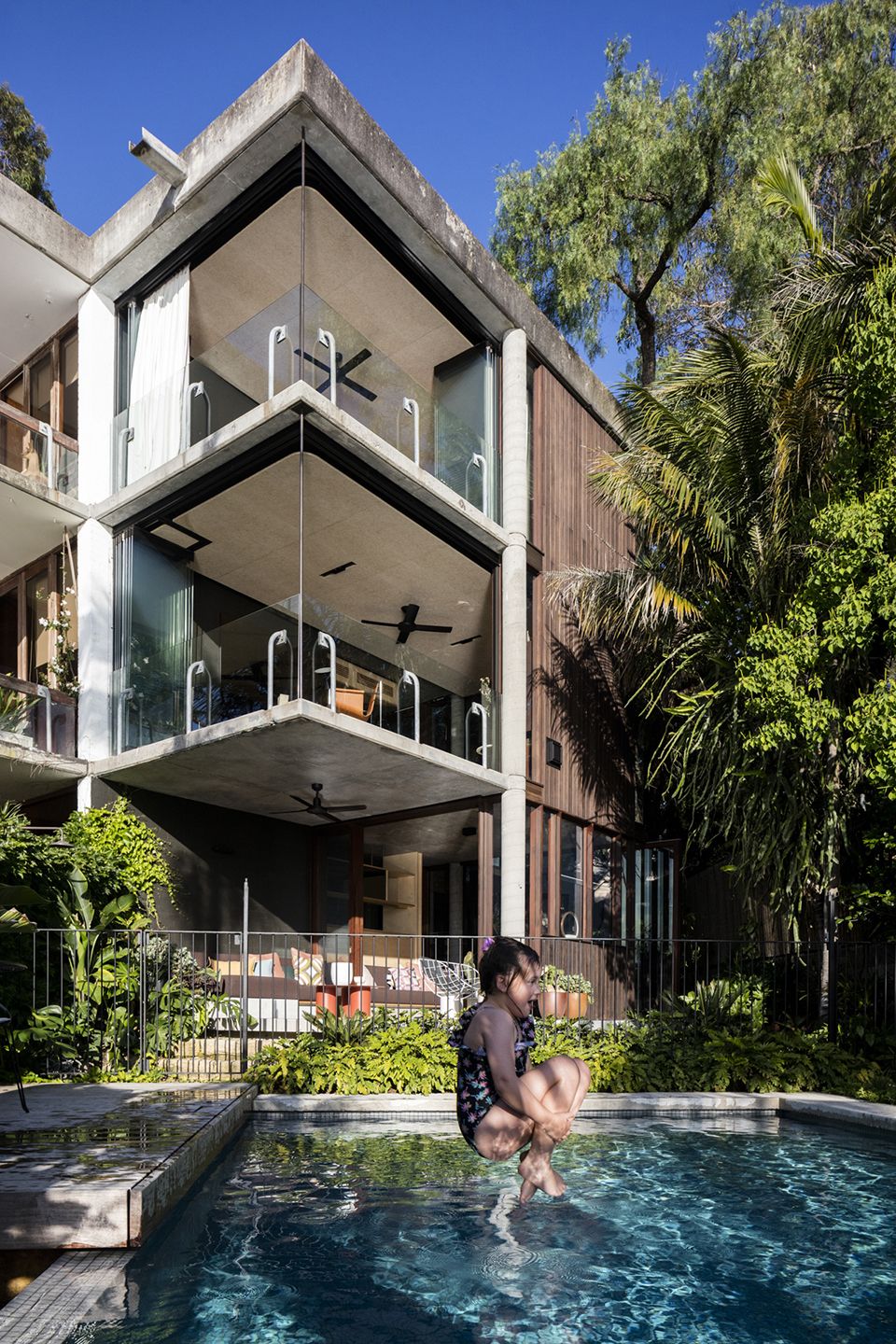
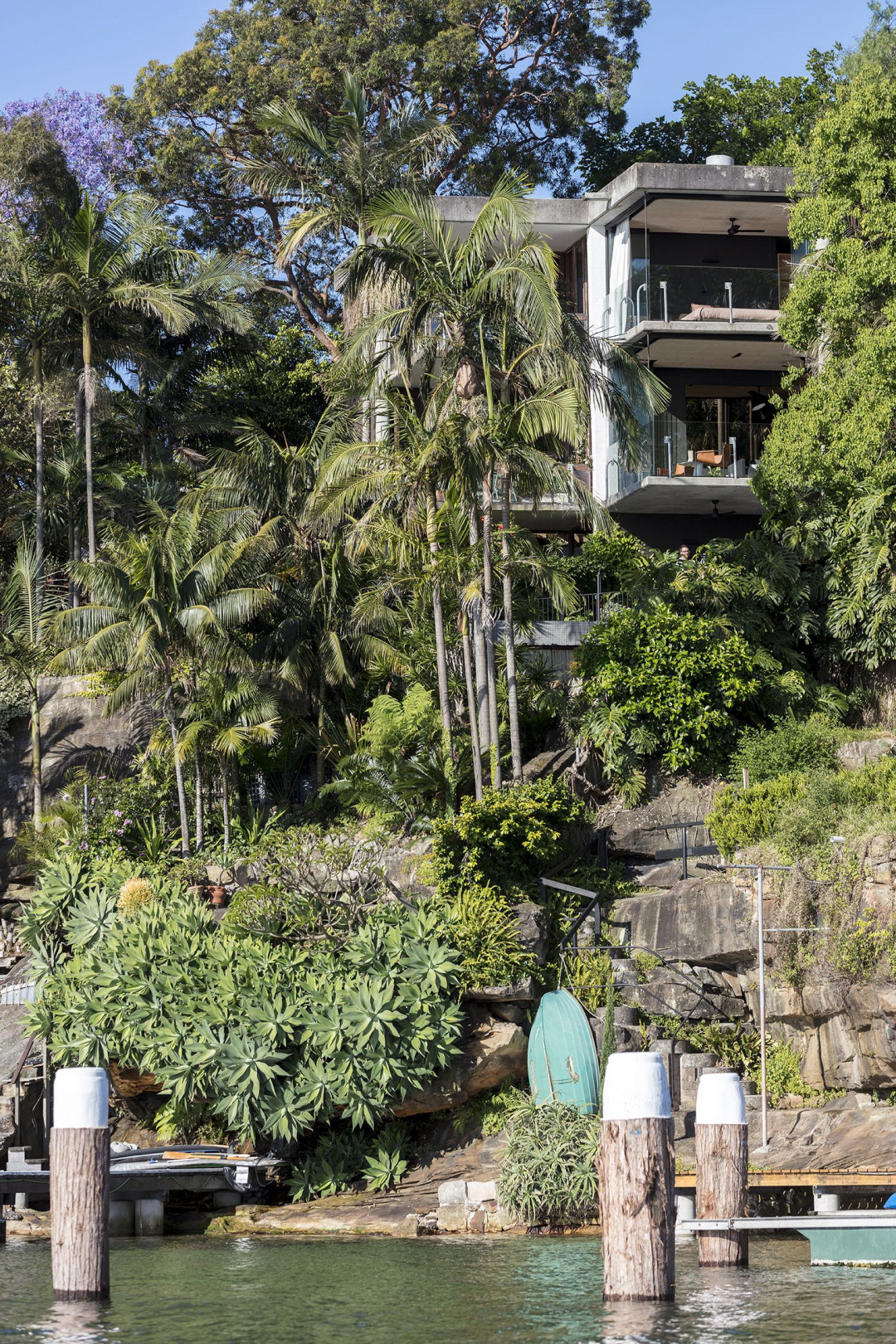
This article originally appeared in studiojohnston.com.au




 Australia
Australia
 New Zealand
New Zealand
 Philippines
Philippines
 Hongkong
Hongkong
 Singapore
Singapore
 Malaysia
Malaysia



